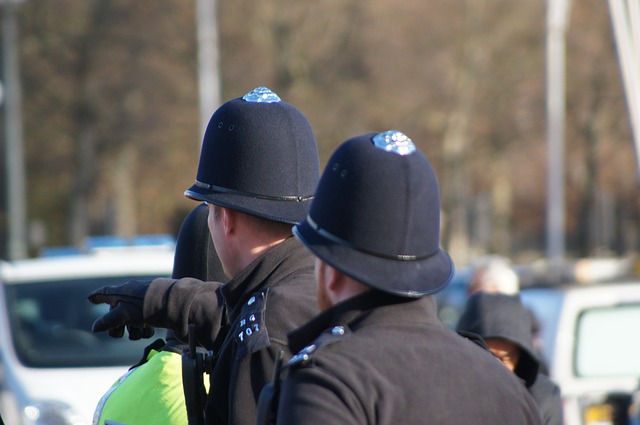Emergency services
Buildings and other features of the built environment such as built infrastructure can present hazardous situations during their construction, operation, special events, maintenance, refurbishment and decommissioning.
It may be appropriate in some of these conditions to develop an emergency plan so that quick and effective action can be taken in the event of an emergency situation arising to ease the severity of that situation and to limit the consequences. An emergency plan establishes agreed, recorded and rehearsed strategies, allowing an effective response. For more information see: Emergency plan.
Amongst other things, it is important to identify on-site and off-site emergency resources that can be called upon if necessary, and estimated response times, based upon distances from fire stations, hospitals, and so on.
On site emergency resources might include:
- Detection and alarm systems.
- Fire extinguishers.
- Spills containment equipment.
- First aid equipment.
- First aiders and other medical or emergency response staff.
Off-site emergency resources will generally include the emergency services. The four main emergency services can be contacted by phoning Emergency Control Centres (ECC) on 999:
- Ambulance service.
- Coastguard.
- Fire and rescue service.
- Police service.
Additional emergency services may also be contacted through Emergency Control Centres on 999:
- Bomb disposal.
- Cave rescue.
- Lifeboat.
- Lowland rescue.
- Mine rescue.
- Moorland search and rescue service.
- Mountain rescue.
- Quicksand search and rescue service.
The 999 number was first introduced in 1937 in central London following a review of a fire on Wimpole Street in 1935 which killed 5 women. It was introduced in other major cities after the Second World War, and by 1976 it covered the whole of the UK. Today the 999 system handles more than half a million calls a week (ref). On receiving a call, the operator will ask ‘Which service do you require”.
In 2009, UK mobile phone networks introduced Emergency Call Roaming so that an emergency call will attempt to use another network if the users network has no signal.
101 can be phoned to contact the Police in non-emergency situations and 111 to contact the NHS in non-life-threatening medical situations. In 1993, 112 was introduced to provide a single number for contacting the emergency services throughout Europe.
As well as emergency response, the emergency services may also:
- Work with local authorities and other agencies such as building control bodies and the Health and Safety Executive (HSE) in relation to issues such as building regulations approvals, licensing, event planning and so on.
- Develop emergency plans.
- Carry out site visits and inspections and advise on safety.
- Carry out investigations following emergencies.
- Undertake enforcement action.
- Undertake promotional and educational activities.
[edit] Related articles on Designing Buildings Wiki
- Alarms.
- Demolition.
- Emergency lighting.
- Emergency plan.
- Emergency signage.
- Evacuating vulnerable and dependent people from buildings in an emergency FB 52
- Fire and rescue service.
- Fire authority.
- Fire marshal.
- Fire.
- First aid.
- Health and safety.
- Health and Safety Executive.
- Health.
- Insurance.
- Licensing.
- Live event production.
Featured articles and news
RTPI leader to become new CIOB Chief Executive Officer
Dr Victoria Hills MRTPI, FICE to take over after Caroline Gumble’s departure.
Social and affordable housing, a long term plan for delivery
The “Delivering a Decade of Renewal for Social and Affordable Housing” strategy sets out future path.
A change to adoptive architecture
Effects of global weather warming on architectural detailing, material choice and human interaction.
The proposed publicly owned and backed subsidiary of Homes England, to facilitate new homes.
How big is the problem and what can we do to mitigate the effects?
Overheating guidance and tools for building designers
A number of cool guides to help with the heat.
The UK's Modern Industrial Strategy: A 10 year plan
Previous consultation criticism, current key elements and general support with some persisting reservations.
Building Safety Regulator reforms
New roles, new staff and a new fast track service pave the way for a single construction regulator.
Architectural Technologist CPDs and Communications
CIAT CPD… and how you can do it!
Cooling centres and cool spaces
Managing extreme heat in cities by directing the public to places for heat stress relief and water sources.
Winter gardens: A brief history and warm variations
Extending the season with glass in different forms and terms.
Restoring Great Yarmouth's Winter Gardens
Transforming one of the least sustainable constructions imaginable.
Construction Skills Mission Board launch sector drive
Newly formed government and industry collaboration set strategy for recruiting an additional 100,000 construction workers a year.
New Architects Code comes into effect in September 2025
ARB Architects Code of Conduct and Practice available with ongoing consultation regarding guidance.
Welsh Skills Body (Medr) launches ambitious plan
The new skills body brings together funding and regulation of tertiary education and research for the devolved nation.
Paul Gandy FCIOB announced as next CIOB President
Former Tilbury Douglas CEO takes helm.
UK Infrastructure: A 10 Year Strategy. In brief with reactions
With the National Infrastructure and Service Transformation Authority (NISTA).























